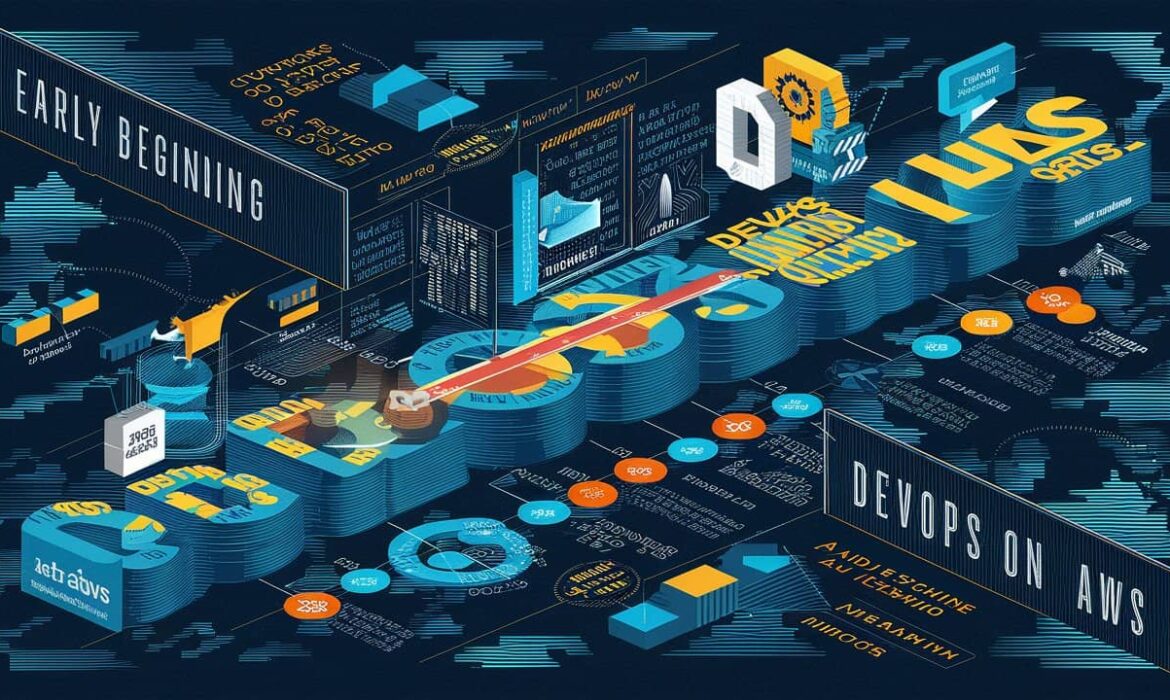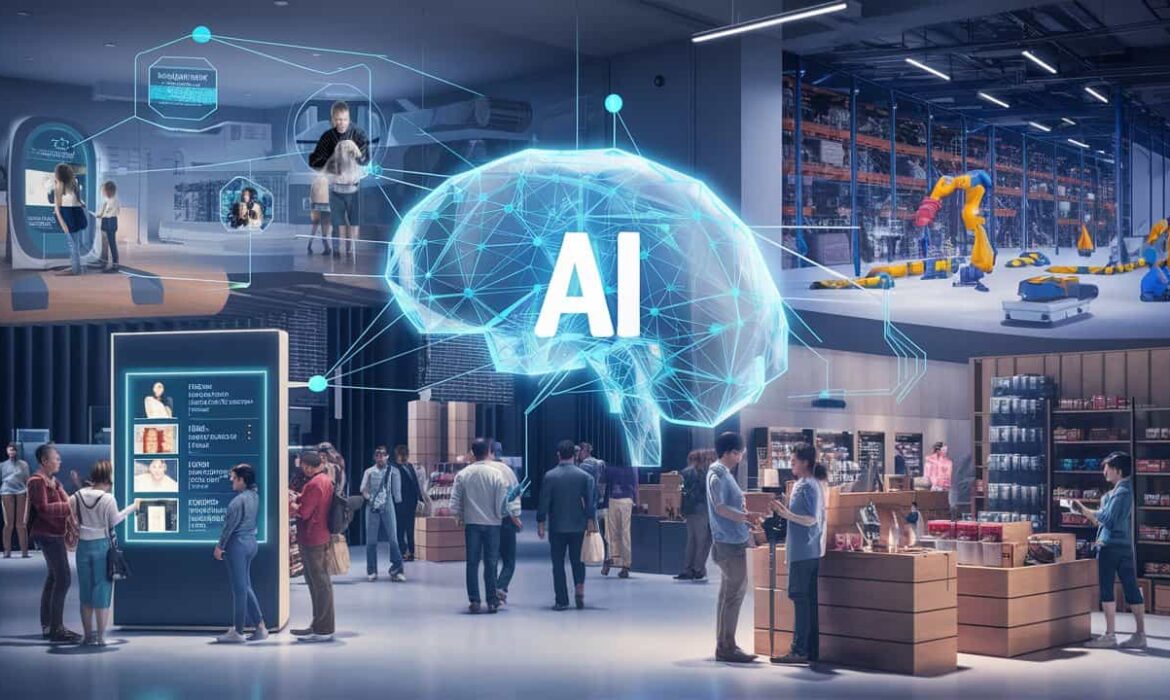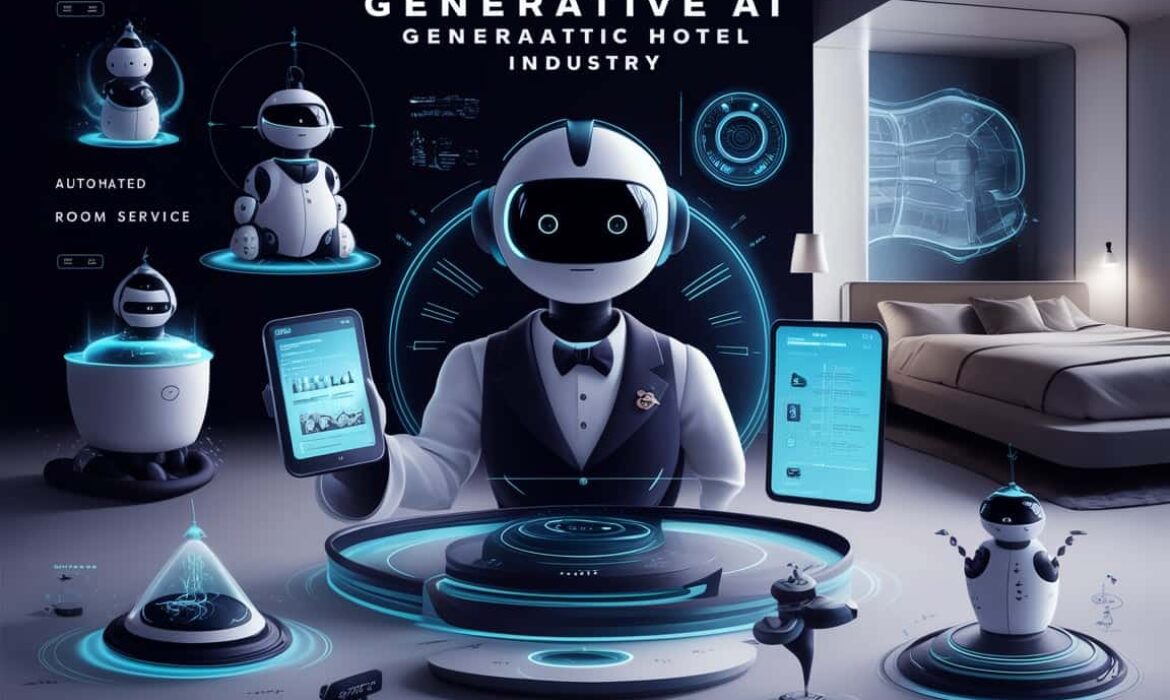From Data to Insight: GPT Models Transform Machine Learning
GPT Models: Methods and Considerations
Training GPT models involves a meticulous process that ensures the model can generate meaningful and coherent text. The process begins with pre-training, where the model is exposed to vast datasets to learn the structure, grammar, and context of language. During this stage, the model identifies patterns and relationships between words, phrases, and sentences. Once pre-trained, the model can generate general text, but to make it more useful for specific tasks, fine-tuning is essential. Fine-tuning involves adjusting the model on a smaller, task-specific dataset, which allows it to learn particular nuances related to the use case. This step improves the model’s performance on tasks like question answering, text summarization, or sentiment analysis.
Another key aspect of GPT model training is transfer learning, where knowledge gained from the pre-trained model is applied to new tasks. By leveraging a pre-trained base, transfer learning reduces the need for large datasets and shortens the time required to train a model from scratch. This method enables GPT models to quickly adapt to domain-specific challenges, providing customized and accurate results with less computational effort. Considerations like managing overfitting and ensuring data diversity are vital to maintaining a model’s generalization capabilities, making fine-tuning and transfer learning both critical steps in the effective deployment of GPT models.
Insights Extraction: How GPT Models Analyze Data
GPT models are powerful tools that utilize advanced natural language processing techniques to effectively analyze both structured and unstructured data. Their ability to detect patterns and relationships within structured data, often found in databases and spreadsheets, allows GPT models to excel in tasks such as data summarization and predictive analysis. Organizations can harness these capabilities to extract valuable insights from large datasets, facilitating improved decision-making grounded in historical trends. Additionally, when dealing with unstructured data—such as text, images, and multimedia—GPT models showcase their proficiency in processing vast amounts of information. They can identify significant themes, sentiments, and anomalies, transforming raw data into actionable insights that enhance customer experiences and deepen understanding of market dynamics across various industries.
The adaptability of GPT models spans several sectors, including finance, healthcare, and marketing, enabling organizations to derive critical insights for informed decision-making. In the financial sector, these models can assess market sentiment and predict economic trends, while in healthcare, they improve patient care by extracting insights from feedback and medical literature. In marketing, GPT models empower brands to understand consumer behavior through the analysis of unstructured data, enabling more targeted campaigns and enhanced customer engagement. As indispensable tools for organizations aiming to fully leverage their data, GPT models are pivotal in driving strategic, data-informed decisions by extracting meaningful insights from a wide range of data sources.
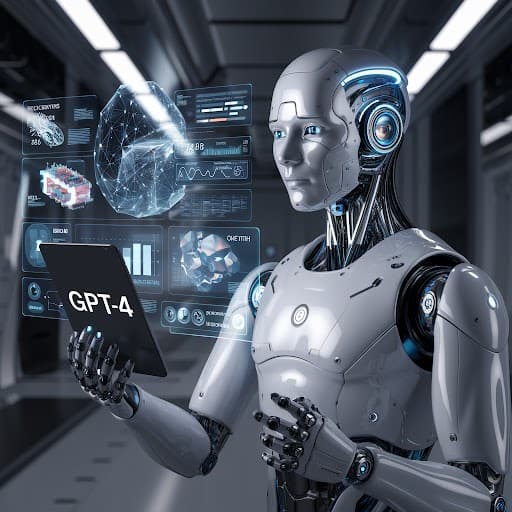
Improving Decisions Using GPT-Powered Analytics
Utilizing GPT-powered analytics for decision-making taps into the advanced capabilities of the Generative Pre-trained Transformer (GPT) model to uncover valuable insights from a variety of datasets. GPT is particularly effective in analyzing unstructured data, such as text and images, by identifying complex patterns and trends. This enhances the decision-making process by automating tasks like data analysis and natural language processing, allowing organizations to extract actionable intelligence from intricate data sources.
Ensuring the accuracy of GPT-powered analytics requires continuous refinement, including fine-tuning model parameters, ongoing training, and validating outputs. This process helps maintain relevance and reliability. Fostering a data-driven decision-making culture is equally important, as it enables organizations to fully leverage GPT’s potential. By integrating cutting-edge technology and sophisticated analytics, companies across sectors like finance, healthcare, and marketing can make more informed, strategic decisions.
Impact on Startups, SMEs, and Large Enterprises
Exploring various avenues within this technology, many startups often begin by utilizing natural language understanding and generation capabilities to decipher the structure and significance of unstructured data. This serves as a popular starting point, given its applicability across a range of solutions and use cases. For fledgling companies embracing innovation, integrating generative AI models throughout an application can rapidly spark creativity, establish a competitive advantage, and introduce novel engagement strategies.
For SMEs, collaboration with service providers that utilize GPT models can optimize marketing strategies through sentiment analysis tools, enabling insights into customer feedback for tailored messaging and product offerings. Automation of tasks like content generation and document summarization can boost productivity and streamline operations for SMEs. Similarly, large enterprises can benefit from implementing GPT models to extract profound insights from vast amounts of unstructured data, enhancing decision-making processes and refining strategies in response to market dynamics and customer preferences. Ultimately, the incorporation of GPT models empowers businesses of all sizes to leverage AI-driven solutions for growth and competitiveness in today’s evolving business landscape.
Challenges and Considerations in Deploying GPT Models
Deploying GPT models presents challenges such as model bias, interpretability, and scalability. Mitigating model bias requires a thorough assessment of training data to eliminate biases and ensure equitable decision-making. Additionally, ensuring the interpretability of GPT models is crucial for building user trust, accomplished through techniques like attention mapping and model explanation frameworks. Addressing these challenges demands a concerted effort to prioritize diverse and unbiased training data and invest in interpretability-enhancing tools.
Scalability represents another key consideration, necessitating robust infrastructure and efficient resource allocation to handle the computational demands of deploying GPT models at scale. By proactively addressing these challenges, organizations can ensure that GPT deployments uphold fairness, transparency, and performance in real-world applications.
GPT Models Shaping Machine Learning Trends
The future trends of machine learning are closely intertwined with the evolving role of GPT models. As cutting-edge advancements continue to refine GPT models’ natural language processing capabilities, they are poised to play a pivotal role in driving the next wave of innovation in machine learning. These trends are expected to see GPT models further pushing the boundaries of language understanding and generation, enabling more nuanced and contextually accurate outputs.
Moreover, as GPT models become increasingly sophisticated, their impact on advancing machine learning applications across various industries is anticipated to be transformative. By spearheading advancements in natural language processing, GPT models are set to revolutionize how AI systems process, analyze, and generate human language, paving the way for more intelligent and adaptable machine learning solutions that have far-reaching implications for the future.
AI-Powered Banking: Innovations in Financial Services
Artificial intelligence is revolutionizing the banking sector with personalized financial solutions and enhanced fraud detection capabilities. This transformation not only enriches customer experiences but also fortifies security through predictive analytics and machine learning. By optimizing processes, enhancing risk management, and fostering product innovation, AI drives efficiency by automating routine tasks. This enables bank personnel to concentrate on strategic initiatives while gaining deeper insights into customer behaviors. Overall, AI’s integration streamlines operations, tailors services, and facilitates informed decision-making, laying the foundation for growth and operational excellence in financial services.
AI and Security: Safeguarding Financial Transactions
It is at the forefront of fortifying the integrity of financial transactions. Through advanced algorithms, Generative AI plays a pivotal role in proactively detecting and preventing fraudulent activities, bolstering security measures, and instilling trust in the banking system. Furthermore, it effectively manages risk by leveraging predictive analytics to assess and mitigate potential threats, ultimately contributing to the improvement of credit scoring systems and risk management processes.
Moreover, Generative AI provides personalized financial advice based on individual customer behaviors and preferences, offering tailored recommendations that enhance decision-making and financial well-being. By seamlessly integrating advanced AI capabilities, financial institutions can ensure the protection and optimization of transactions, empowering both customers and the financial sector as a whole.
Automation Revolutionizing Banking Operations
Automation is revolutionizing banking operations by streamlining processes such as customer onboarding, loan approvals, and compliance checks. Technologies like RPA and AI reduce processing times and errors, freeing up resources for innovation and strategic initiatives while improving service quality. Additionally, automation enhances the customer experience through 24/7 AI-driven chatbots and virtual assistants, offering faster responses and personalized service to a broader customer base.
Moreover, automation aids banks in maintaining regulatory compliance by efficiently handling complex checks and audits, reducing the risk of compliance violations. It also mitigates financial and reputational risks, ensuring regulatory adherence and sustainable growth in a competitive market.

Challenges and Limitations of Using AI in Financial Institutions
Enhancing Data Security and Privacy
Financial institutions encounter significant cybersecurity risks due to the substantial volume of customer data they manage. To counter these threats, institutions must implement robust cybersecurity measures such as encryption and access controls. The integration of AI-driven security solutions bolsters the ability to identify and respond to potential threats. Moreover, fostering a culture of compliance and providing employee training prioritizes data protection, ultimately strengthening the institution’s overall security posture.
Mitigating Algorithmic Bias
AI systems relying on historical data are susceptible to perpetuating bias, which can result in unfair lending practices and skewed risk assessments. To address this, regular audits of data and algorithms are essential to identify and rectify biases. Leveraging diverse datasets and employing explainable AI techniques contribute to fostering transparency in the decision-making processes, ensuring fair and equitable outcomes.
Navigating Regulatory Compliance
The intricate landscape of regulatory requirements demands that financial institutions establish dedicated compliance teams. Collaborating with regulators to comprehend and adapt to evolving compliance requirements is crucial. Additionally, the adoption of automated compliance tools facilitates ongoing adherence to regulations, thereby ensuring that the institution operates within the parameters of varying regulatory environments.
The Future of AI in Banking and Its Advantages
The future of AI in banking holds immense potential for transformation, offering numerous advantages to financial institutions.
1. Enhanced Customer Experience: AI-powered chatbots and virtual assistants deliver personalized service, enabling banks to address customer inquiries swiftly, improving overall satisfaction.
2. Advanced Fraud Detection: AI algorithms analyze transaction patterns in real-time to identify anomalies, enhancing security and minimizing losses from fraud.
3. Improved Risk Management: Predictive analytics provide more accurate assessments of creditworthiness, leading to better risk management and informed lending decisions.
4. Operational Efficiency: Automation of routine tasks, like data entry and compliance reporting, streamlines operations, reducing costs and allowing staff to focus on strategic initiatives.
5. Data-Driven Decision Making: AI analyzes vast data sets, offering insights that drive strategic decisions and helping banks identify market trends.
6. Personalized Financial Products: AI tailors financial offerings to individual customer needs, boosting retention and satisfaction.
Overall, AI is set to revolutionize banking by enhancing security, efficiency, and customer engagement, ensuring sustained growth in a competitive landscape.
Smart Search: AI Engines Redefining Digital Discovery
AI-powered search engines have intensified information retrieval, marking a significant advancement in user experience. Traditional search engines relied on basic algorithms and keyword matching, struggling to keep up with the growing complexity and volume of digital content. The introduction of AI-driven platforms ushered in a new era of search by utilizing machine learning and natural language processing (NLP) to grasp user intent, resulting in personalized search results and greater contextual relevance. Perplexity AI, Bing, YEP, and You.com are among the platforms leveraging these technologies to enhance search capabilities, with Perplexity AI excelling in interpreting complex queries and Bing offering personalized, conversational experiences.
This transformation in search technology not only reshapes how users access information but also revolutionizes their engagement with digital platforms. AI-powered engines now deliver more intuitive and personalized outcomes, tailored to individual behaviors and preferences. As AI progresses, these platforms are set to play a more significant role in providing precise, context-aware, and ethical digital experiences. This evolution suggests a future where search engines comprehend user intent better, paving the way for a personalized and responsible digital environment.
The Evolution from Traditional to AI-Powered Search
The shift from traditional to AI-powered search engines has revolutionized how we access digital information. Early search engines relied on basic algorithms and keyword matching, which often produced inaccurate results due to their inability to grasp deeper context or user intent. In contrast, AI-powered search engines utilize machine learning and natural language processing (NLP) to interpret context, semantics, and user behavior, providing more accurate and personalized search experiences.
AI’s integration has significantly enhanced search engine capabilities, enabling a better understanding of user intent and more tailored results. This evolution sets a new standard for accuracy and relevance while ushering in the future of predictive, conversational, and voice-activated searches, ultimately transforming the user experience and redefining the digital search landscape.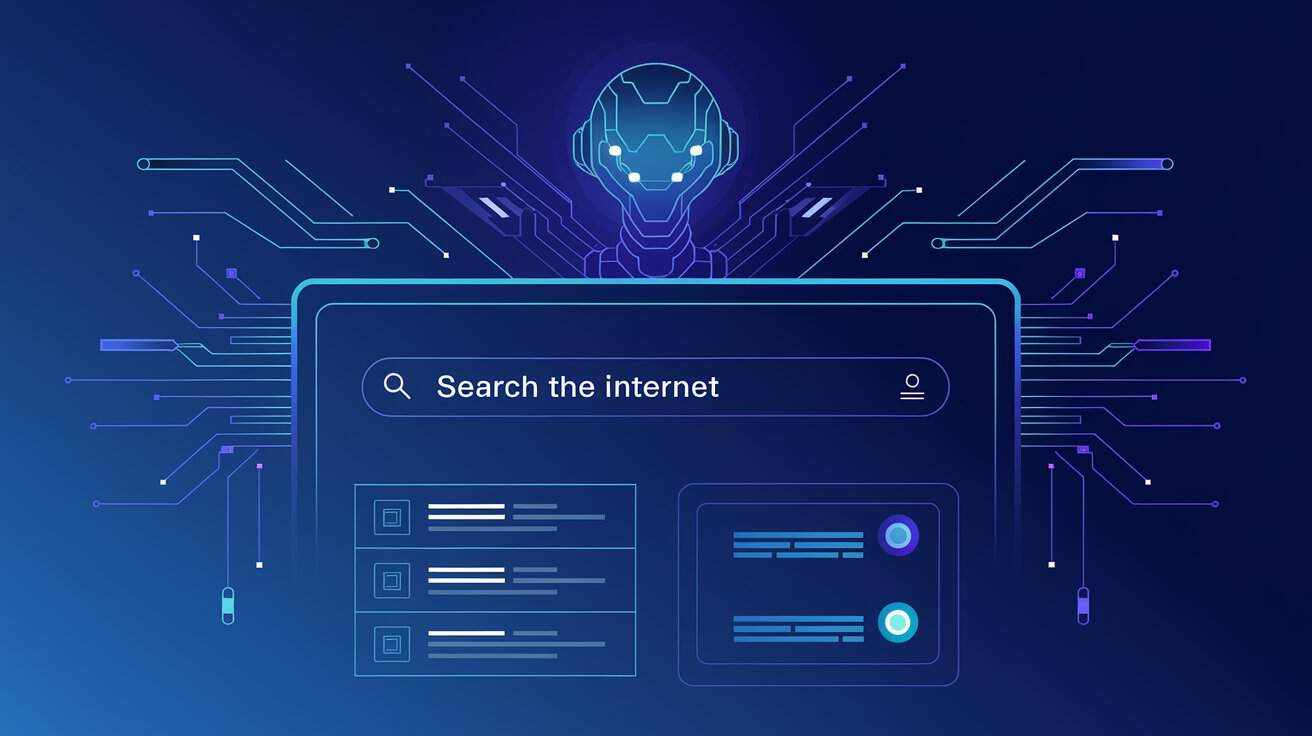
NLP Enhances Searches; Machine Learning Boosts Precision
The utilization of Natural Language Processing (NLP) is instrumental in enhancing search functionality as it enables search engines to effectively comprehend and interpret user queries. Through the processing of intricate language structures, NLP facilitates the delivery of more precise and contextually pertinent search results, ultimately enriching the user experience by fostering intuitive and conversational interactions that bridge the gap between human language and machine understanding.
Simultaneously, machine learning algorithms play a pivotal role in further enhancing search precision by continuously assimilating insights from user interactions and behaviors. By scrutinizing extensive datasets to identify patterns and trends, these algorithms empower search engines to optimize results in alignment with individual preferences and intent. The combined prowess of NLP and machine learning engenders a formidable synergy that elevates search capabilities, yielding highly personalized outcomes and reshaping the dynamics of user access and engagement with online information. This evolution paves the way for a new standard of accuracy and relevance within the digital search landscape.
Understanding User Intent: How AI Personalizes Search Results
In the domain of AI-driven search engines, the ability to discern user intent is crucial for delivering personalized search results. Through meticulous analysis of keywords, contextual hints, and user behavior, AI algorithms can accurately grasp the true purpose behind each search query. By employing advanced techniques in natural language processing (NLP) and machine learning, these algorithms can predict user preferences and tailor search results accordingly, ensuring relevance and elevating user satisfaction.
By continuously learning from user interactions, AI not only hones its understanding of intent but also anticipates future needs, offering a more intuitive and tailored browsing experience. This proactive approach not only simplifies information retrieval but also promotes deeper user engagement by presenting content that closely matches individual preferences and browsing habits. As AI progresses, its ability to interpret and cater to user intent is poised to revolutionize how people interact with and consume digital information.
The Role of AI in Voice and Visual Search
Voice and visual search are advanced search technologies that allow users to find information through spoken commands or images, rather than traditional text-based queries. Voice search uses speech recognition to interpret and respond to voice queries, making it easier for users to interact with search engines hands-free. Visual search enables users to upload or capture images, allowing AI to analyze and identify objects, text, or scenes within the image for relevant search results.
AI plays a vital role in both technologies. In voice search, AI uses NLP to understand context and intent, delivering accurate and relevant responses. For visual search, AI leverages machine learning and computer vision to recognize patterns, objects, and features in images. This helps users explore information more intuitively, enhancing personalization and improving overall search accuracy and efficiency.
The Future of Search: What’s Next for AI-Powered Engines?
The future looks promising for AI-powered search engines, with continuous developments in natural language processing, machine learning, and predictive analytics driving them towards predictive and personalized search interactions. By enhancing their ability to understand user intent, context, and preferences, AI-driven search engines are poised to deliver highly tailored results, heralding a new era focused on precision and relevance in search experiences.
Anticipated improvements in voice-activated searches and conversational interfaces are expected to revolutionize user experiences, facilitating more fluid and intuitive interactions with search platforms. This shift towards user-friendly interfaces foresees a future where individuals can engage with search engines in a natural, conversational manner, fundamentally altering the landscape of information retrieval. Furthermore, a spotlight on AI ethics and transparency will be essential to address bias and ensure responsible AI practices, paving the way for search engines that offer personalized, accurate, and ethically sound digital experiences.
Legacy Chatbot vs AI Chatbot: Which is the Better Choice?
Legacy chatbots are built on older technology, using rule-based systems that rely on predefined scripts and keywords to handle interactions. They work well for basic queries but struggle with more complex conversations, often limiting customer engagement and satisfaction. Legacy chatbots include scripted responses, heavy reliance on keyword recognition, and basic functionality for tasks like answering FAQs. They also lack learning capabilities, meaning they don’t improve with each interaction, which can lead to repetitive and limited responses.
AI chatbots have revolutionized the chatbot landscape by using natural language processing (NLP), machine learning, and advanced algorithms. They offer more personalized and meaningful interactions, adapting to user needs and providing efficient responses. AI chatbots include understanding natural language for human-like conversations, learning from past interactions to improve, maintaining context during exchanges, and handling diverse tasks such as customer support and sales inquiries.
AI Innovations: Enhancing Customer Service & Productivity
Enhancing Customer Experience with AI-Powered Virtual Agents and Voice Assistants
Customer service virtual agents and voice assistants leverage generative AI to revolutionize customer interactions. These innovative technologies offer intuitive conversational interfaces that enhance human capabilities and cater to diverse business needs.
Boosting Enterprise Productivity through AI-Powered Solutions
By incorporating generative AI-powered chatbots, enterprises can standardize internal communications and empower employees with self-service options for common inquiries. Moreover, these solutions improve conversation flows for tech support and streamline routine activities, ultimately reducing human error rates.
Benefits of AI Chatbots
- Conversational AI: AI chatbots use advanced NLP to engage in human-like interactions, making customers feel like they are talking to a real person. This personalized experience fosters meaningful interactions, addressing customer concerns with accuracy and empathy.
2. Empowering Self-Service: AI chatbots provide intelligent self-service options that efficiently handle a wide range of inquiries, streamlining the support process and saving time for customers. This enhances convenience and overall satisfaction, reducing the burden on human agents and improving the customer journey.
3. Cost-Effective Support: AI chatbots automate repetitive tasks, like answering common questions, reducing the need for human agents and resulting in substantial cost savings for businesses. Additionally, they provide 24/7 customer support, ensuring service availability without incurring the costs of constant staffing.
User Experience with AI Chatbots
AI chatbots excel in providing a smooth and pleasant user experience by adeptly comprehending natural language, retaining context, and customizing interactions. Through the analysis of user data, they can customize responses, suggestions, and deals according to individual preferences, elevating the degree of personalization. Moreover, AI chatbots offer constant support, guaranteeing that customers can receive help at any time, in contrast to human agents. Furthermore, they enhance efficiency by managing numerous inquiries concurrently, cutting down on wait times and notably increasing response rates, ultimately streamlining and enhancing the overall customer experience.
Choosing the Right Chatbot for Business
When it comes to selecting a chatbot for business, the choice between legacy and AI chatbots hinges on the specific needs, objectives, and budget. Each option has its strengths and weaknesses, so it’s important to weigh various factors before making a decision. Below are some key considerations that can guide choosing the right chatbot solution:
1. Business Objectives
Understanding business goals is critical for selecting the most suitable type of chatbot. For companies with short-term objectives, such as quickly managing simple customer inquiries, answering frequently asked questions, or guiding users through basic processes, a legacy chatbot may suffice. These chatbots can efficiently handle straightforward tasks without the need for complex technology. However, for businesses focused on long-term growth and improving customer engagement, investing in an AI chatbot is a more advantageous option.
AI chatbots provide enhanced features, including personalized responses and contextual understanding, which facilitate deeper customer relationships and lead to greater satisfaction. This makes AI chatbots valuable for businesses aiming to scale their operations and enhance overall customer experience.
2. Customer Expectations
Customer expectations play a crucial role in choosing the right chatbot. If the customer base prefers quick, straightforward responses with minimal interaction, a legacy chatbot may be ideal for handling basic queries efficiently. However, if a more personalized and engaging experience is expected, AI chatbots are the better option, as they can understand natural language, adapt to individual preferences, and provide dynamic interactions that enhance customer satisfaction.
3. Budget Constraints
Legacy chatbots tend to have lower initial costs, which can be attractive for businesses with tight budgets, but they may require more maintenance over time, increasing overall expenses. AI chatbots, while requiring a higher upfront investment, offer significant long-term savings by managing a greater volume of inquiries, boosting efficiency, and improving customer satisfaction, ultimately delivering a stronger return on investment.
4. Technical Infrastructure
Assessing the current technical setup is vital for maintaining smooth operations. It’s important to determine how effectively a chatbot can integrate with existing systems like customer relationship management (CRM) software and other business tools. AI chatbots are typically built for compatibility with modern platforms, enabling seamless integration with various applications, which improves overall operational performance.
5. Scalability Requirements
Anticipating growth or an increase in customer inquiries makes opting for an AI chatbot a wise decision. These chatbots are designed to scale, allowing them to adapt to changing demands and handle more complex queries as the business expands. This scalability ensures that customer service capabilities grow in tandem with the business, facilitating the maintenance of high-quality service levels.
In a nutshell, AI chatbots have many benefits when comparing legacy chatbots and AI chatbots. They are more capable, provide a better user experience, and can easily adapt to different situations. While legacy chatbots can be useful for specific tasks, their limitations can lead to unhappy customers, especially in today’s fast-paced digital world.
As companies focus more on keeping customers engaged and running their operations smoothly, AI chatbots are becoming the preferred option. By recognizing the differences between the two chatbot types and aligning the choice with business objectives, organizations can make the best selection for their needs. Ultimately, investing in an AI chatbot can enhance customer interactions, support business growth, and help succeed in the digital age.
Overcoming Telecom Management Challenges with Generative AI
The Telecommunications Management Network (TMN) is an architectural framework designed to manage network resources effectively through predefined interfaces, now enhanced by AI technologies. This hierarchical approach allows for efficient modeling of network resources and management entities, addressing various aspects of telecommunications, from operations to service and business management, while leveraging AI to optimize performance and streamline communication.
TMN’s architecture consists of several key layers. The element management layer utilizes AI for monitoring lower-level resources like switching systems, enhancing performance management, and metrics tracking. The network management layer employs AI to analyze data for improved connection management and resource grouping. In the service management layer, AI enhances service logic, ensuring efficient resource utilization. Finally, the business management layer integrates AI to optimize stakeholder relationships and oversee service deployment from a commercial perspective.
AI Integration for Enhanced Customer Service in Telecom
In the rapidly evolving telecommunications sector, leveraging AI in customer service has become essential for staying competitive. As customer expectations rise, telecom companies must deliver prompt support to ensure loyalty. AI-driven solutions like chatbots, virtual assistants, and automated communication services enable round-the-clock inquiry management, significantly cutting wait times and providing immediate assistance, thereby elevating the overall customer experience.
AI’s capability to analyze customer interactions reveals valuable insights into behavior patterns. This understanding allows telecom providers to customize their services effectively, proactively addressing issues and minimizing churn while fostering stronger customer loyalty.
Ultimately, integrating AI not only enhances operational efficiency but also equips telecom companies to swiftly respond to market changes. By delivering personalized service tailored to individual preferences, telecom providers can deepen customer relationships and achieve long-term success in telecommunications management.
Minimizing Downtime: Predictive Maintenance with AI
Minimizing downtime in telecom operations is critical, and predictive maintenance powered by AI offers a robust solution. By analyzing real-time data from network equipment and infrastructure, AI can predict potential failures before they occur. This proactive approach enables telecom companies to schedule maintenance precisely when needed, rather than relying on reactive measures that can lead to unexpected outages.
Additionally, predictive maintenance enhances asset management by optimizing resource allocation. AI algorithms can identify patterns and trends that human operators might overlook, allowing for timely interventions that extend the life of critical infrastructure. By reducing the frequency and duration of equipment failures, telecom providers not only maintain seamless service for their customers but also significantly cut maintenance costs.
Ultimately, integrating AI for predictive maintenance empowers telecom companies to transform their operational strategies. This shift not only minimizes downtime but also boosts overall efficiency, leading to improved customer satisfaction and loyalty. By embracing this technology, firms can ensure their networks remain resilient against the demands of an increasingly digital world.
AI-Enhanced Resource Management in TMN
AI-enhanced resource management in the Telecommunications Management Network (TMN) is vital for optimizing complex telecom infrastructures. By leveraging AI technologies, operators can analyze real-time data, facilitating better decision-making and resource allocation. This proactive management minimizes downtime and enhances service reliability, allowing telecom companies to respond swiftly to potential issues and optimize network performance effectively.
In the broader scope, this integration significantly boosts customer satisfaction. Improved network performance and reduced service interruptions create a seamless experience for users, which is crucial in today’s competitive market. AI-driven insights enable telecom operators to adapt to fluctuating demands and ensure efficient service delivery, ultimately strengthening customer loyalty.
Moreover, AI-enhanced resource management fosters organizational agility, equipping telecom companies to embrace emerging technologies like 5G and IoT. This adaptability not only streamlines day-to-day operations but also positions operators for future growth. By integrating AI within TMN, telecom providers become more resilient and responsive, ready to tackle evolving industry challenges and capitalize on new opportunities.
AI for Streamlined Data Management and Traffic Forecasting
AI is crucial for streamlined data management and traffic forecasting in the telecommunications industry due to the exponential growth of data and the complexity of network operations. As networks expand and user demands increase, telecom operators face challenges in efficiently managing vast amounts of data while ensuring optimal performance. AI-driven analytics tools can process and analyze this data in real-time, allowing operators to make informed decisions quickly. By leveraging machine learning algorithms, AI can identify patterns in traffic usage and predict future demand, enabling proactive adjustments to network resources.
Moreover, accurate traffic forecasting is essential for maintaining service quality and customer satisfaction. AI can enhance forecasting models by incorporating various factors such as historical usage data, time-of-day trends, and external influences like events or weather conditions. This predictive capability allows telecom operators to allocate resources effectively, minimizing congestion and ensuring smooth service delivery.
Ultimately, the integration of AI in data management and traffic forecasting not only improves operational efficiency but also enhances the overall user experience. By anticipating user needs and optimizing network performance, telecom providers can maintain a competitive edge in a rapidly evolving market, ensuring reliable connectivity for their customers.
The Transformative Impact of Generative AI in Telecom
GenAI is revolutionizing the telecom industry as networks grow more complex with the implementation of 5G and IoT. Efficiently managing these networks is increasingly challenging, but GenAI addresses this by automating tasks, optimizing performance, and enhancing the customer experience. By predicting network traffic patterns, telecom providers can proactively allocate resources, effectively reducing congestion and downtime while improving overall operational efficiency.
In addition to network management, GenAI is significantly enhancing customer support. AI-powered chatbots and virtual assistants enable telecom companies to handle inquiries more efficiently, offering real-time assistance that eases the burden on human agents. This not only boosts customer satisfaction but also streamlines support processes. As GenAI continues to drive innovation, it will facilitate personalized services, bolster security measures, and enable seamless network management, positioning telecom companies at the forefront of technological advancements. The influence of GenAI in the telecom sector is profound and essential for future competitiveness.
The Impact of Generative AI on Real Estate Document Processing
How AI is Automating Real Estate Paperwork?
AI is transforming the real estate industry by automating paperwork handling through intelligent document processing (IDP). This technology utilizes AI, machine learning, and natural language processing to streamline the management of documents such as contracts, lease agreements, and property records. By automating these tasks, IDP enhances efficiency and accuracy, significantly reducing the manual effort required for document management.
The IDP process begins with document ingestion, where files are captured from various sources like emails, scanners, or cloud storage and converted into digital formats if necessary. Preprocessing follows, which includes noise reduction, image correction, and text extraction to prepare the documents for accurate data extraction. During the data extraction phase, AI algorithms analyze the content to identify and pull out specific information such as names, dates, and contract terms, using natural language processing to understand the text’s context.
Once the data is extracted, it undergoes validation to ensure accuracy by cross-referencing with existing databases or predefined rules. The validated data is then classified into relevant categories, such as lease agreements or property sale contracts. Finally, the classified data is integrated into systems or databases, such as property management or CRM platforms. A review stage, involving human oversight, ensures data accuracy and provides feedback to refine AI models, resulting in a more efficient and reliable document processing system for real estate professionals.
AI’s Role in Streamlining Real Estate Transactions
AI is transforming the real estate industry by boosting efficiency and lowering costs. By automating crucial tasks like document management, contract review, and compliance checks, AI reduces the need for manual effort and minimizes errors. This acceleration in processing speeds up transactions, allowing both real estate professionals and clients to finalize deals more swiftly and accurately. With AI handling these routine tasks, agents can concentrate on building client relationships and strategic planning, ensuring a more seamless transaction experience.
The financial benefits of AI in real estate are significant. Automation cuts down on the need for extensive human resources, which can otherwise lead to higher operational costs. By streamlining workflows and speeding up decision-making, AI enables real estate firms to manage transactions more efficiently. This results in substantial savings on administrative expenses and allows businesses to use their resources more effectively, enhancing their bottom line.
Additionally, AI’s ability to process information rapidly leads to faster deal closures and improved cash flow. By reducing manual intervention and optimizing workflows, AI helps real estate firms close transactions more quickly, resulting in timely revenue generation. This efficiency decreases operational costs and provides a competitive edge, allowing businesses to stay ahead in a dynamic market. Adopting AI technology equips real estate firms to navigate industry changes with agility and precision.
Data Security in Automated Document Processing with AI
In this real estate sector, AI-driven automated document processing enhances both efficiency and data security. By integrating advanced encryption and secure access controls, AI systems protect sensitive information, such as contracts and client records, from unauthorized access and breaches. This robust security framework ensures the confidentiality of data and builds trust with clients.
AI also boosts security through continuous monitoring of anomalies and potential threats. This real-time threat detection provides an extra layer of protection, allowing real estate professionals to manage documents efficiently while maintaining high standards of data security. With AI, businesses can streamline operations without compromising on data integrity.
Reducing Errors: The Accuracy of AI-Driven Documentation
AI-driven documentation is revolutionizing the real estate sector by significantly reducing errors in paperwork. Traditional methods often involve manual data entry and review, which can lead to mistakes, delays, and costly disputes. However, AI systems, equipped with machine learning algorithms, can automatically extract, analyze, and verify large volumes of data with a high degree of accuracy. This not only eliminates the risk of human error but also ensures compliance with legal standards, which is critical in real estate transactions. As a result, real estate professionals can experience smoother and faster approval processes.
Moreover, AI’s ability to review documents in real-time allows for the instant identification of inconsistencies and omissions that could otherwise be overlooked. By flagging potential issues early, AI solutions minimize the need for time-consuming corrections and reduce the chance of legal complications down the line. This enhanced accuracy and efficiency lead to greater trust between stakeholders, allowing agents, buyers, and sellers to focus on the deal rather than on documentation errors, ultimately improving the overall real estate transaction experience.
AI-Powered Document Review: Faster Approvals and Compliance Checks
AI-powered document review is transforming the real estate sector by automating critical tasks such as contract verification and compliance checks. Using advanced machine learning algorithms, AI swiftly identifies errors, missing information, and inconsistencies within documents, ensuring they meet regulatory standards. This not only reduces the time required for approvals but also minimizes the chances of human error, making transactions more efficient. Real estate professionals benefit from the speed and accuracy of AI, allowing them to close deals faster. As a result, the process becomes more streamlined, improving productivity across the board.
In addition to speeding up approvals, AI significantly reduces legal risks by ensuring compliance with the latest regulations. It continuously monitors changes in laws and industry standards, automatically updating document checks to reflect new requirements. This consistency helps both buyers and sellers avoid potential legal issues, fostering greater trust and transparency in real estate transactions. Moreover, AI’s ability to reduce manual labor leads to cost savings, making operations more efficient. As a result, AI is becoming a crucial asset in the modern real estate landscape.
The Future of Real Estate: Generative AI and Seamless Property Deals
Generative AI is set to transform the real estate industry by streamlining property transactions. AI-powered platforms can analyze vast data, helping buyers and sellers make quick, informed decisions. Virtual property tours, market trend predictions, and accurate valuations allow investors and agents to strategize more efficiently.
AI also enhances transaction security by automating documentation and reducing fraud. It speeds up the process while delivering personalized recommendations, creating a more seamless, transparent, and efficient property deal experience. The future of real estate, powered by AI, is more efficient and customer-centric than ever.
The Evolution of DevOps on AWS: Trends and Innovations
The Evolution of DevOps
Before DevOps became mainstream, development and operations functioned as distinct entities within the application release cycle. Developers would create code and hand it off to the operations team, which was responsible for deploying it into production. This traditional approach often led to conflicts due to differing priorities: developers aimed for frequent, rapid updates to introduce new features and fixes, while operations sought to minimize releases to ensure system stability and uptime. The absence of a well-defined or automated handover process exacerbated these issues, resulting in miscommunications and misalignments. Developers might provide code with inadequate deployment documentation, while operations teams struggled to understand and manage the deployment, leading to delays and inefficiencies.
The adoption of DevOps revolutionized this process by integrating development and operations more closely. It improved the reliability of software development and operations, reduced the time to market for software products, and enabled quicker, more effective delivery of updates. Additionally, DevOps fostered a better organizational culture and collaboration, bridging gaps between teams and streamlining workflows.
Embracing AI-Driven Automation in AWS DevOps
AI-driven automation is revolutionizing DevOps on AWS, enhancing efficiency and precision in development processes. In 2024, integrating AI with AWS DevOps practices allows organizations to automate tasks like code testing, deployment, and monitoring. Tools like AWS CodeGuru offer automated code reviews and performance recommendations, streamlining workflows and minimizing human error. This automation accelerates development cycles and results in more reliable applications.
Additionally, AI enhances predictive capabilities within AWS environments, allowing DevOps teams to foresee potential issues before they arise. Machine learning algorithms analyze data to predict system failures, performance bottlenecks, and security vulnerabilities. This proactive approach enables teams to address issues preemptively, ensuring smoother and more resilient operations. AI-driven automation in AWS DevOps is setting new standards for smarter, faster, and more secure cloud-based application development.
The Rise of GitOps: Streamlining Cloud Deployments
AI-driven automation is revolutionizing DevOps on AWS, enhancing efficiency and precision in development processes. In 2024, integrating AI with AWS DevOps practices allows organizations to automate tasks like code testing, deployment, and monitoring. Tools like AWS CodeGuru offer automated code reviews and performance recommendations, streamlining workflows and minimizing human error. This automation accelerates development cycles and results in more reliable applications.
Additionally, AI enhances predictive capabilities within AWS environments, allowing DevOps teams to foresee potential issues before they arise. Machine learning algorithms analyze data to predict system failures, performance bottlenecks, and security vulnerabilities. This proactive approach enables teams to address issues preemptively, ensuring smoother and more resilient operations. AI-driven automation in AWS DevOps is setting new standards for smarter, faster, and more secure cloud-based application development.
 Harnessing the Power of Serverless Architectures
Harnessing the Power of Serverless Architectures
Serverless architectures on AWS are revolutionizing DevOps by eliminating the need for infrastructure management. With AWS Lambda, developers can deploy code without provisioning or managing servers, leading to significant cost savings and operational efficiency. This model allows DevOps teams to focus on application logic rather than infrastructure, enabling faster development cycles and streamlined workflows.
AWS’s serverless offerings, including AWS Lambda, Amazon API Gateway, and AWS Step Functions, integrate seamlessly with existing DevOps tools. This integration supports continuous integration and continuous deployment (CI/CD) pipelines, facilitating automated testing and deployment processes. The result is a more agile development environment where updates and features can be rolled out quickly and reliably.
Moreover, serverless architectures enhance scalability and performance. AWS automatically scales applications based on demand, reducing the need for manual intervention. This dynamic scalability aligns perfectly with DevOps principles, promoting a more resilient and responsive system.
Advancements in Continuous Integration and Continuous Delivery (CI/CD)
In 2024, Continuous Integration (CI) and Continuous Delivery (CD) saw significant advancements, driven by the integration of AWS and DevOps practices. AWS now offers enhanced CI/CD tools that streamline the development pipeline, reducing manual interventions and accelerating deployment processes. With AWS CodePipeline and AWS CodeBuild, teams can automate and manage complex workflows efficiently, ensuring faster and more reliable delivery of applications.
The latest updates include improved support for containerized applications, thanks to AWS’s integration with Kubernetes and Docker. These advancements enable seamless deployment and scaling of microservices architectures, which are crucial for modern DevOps strategies. By leveraging AWS’s managed services, teams can focus more on building and testing rather than managing infrastructure.
Furthermore, AWS’s integration with various third-party tools and platforms enhances CI/CD capabilities, offering more flexibility and customization. This evolution in CI/CD practices is crucial for maintaining agility and efficiency in today’s fast-paced development environments.
Scaling DevOps with Kubernetes and AWS Fargate
Scaling DevOps becomes seamless with the integration of Kubernetes and AWS Fargate. Kubernetes serves as a robust container orchestration platform that efficiently manages and scales containerized applications. When paired with AWS, it offers enhanced benefits such as improved scalability, high availability, and streamlined resource management. Kubernetes simplifies the complex tasks of deployment, scaling, and monitoring, making it a cornerstone for modern DevOps practices.
AWS Fargate, a serverless compute engine, complements Kubernetes by handling the underlying infrastructure management. This allows DevOps teams to focus on developing and deploying applications without the burden of managing servers or clusters. Together, Kubernetes and AWS Fargate streamline operations, reduce overhead, and accelerate deployment cycles. This synergy not only optimizes resource utilization but also supports scalable, efficient, and cost-effective DevOps practices, addressing the demands of contemporary application environments.
Future-Proofing DevOps: The Role of Observability and Monitoring
In the landscape of AWS and DevOps, ensuring robust observability and monitoring is crucial for future-proofing operations. Modern DevOps practices on AWS emphasize the integration of advanced monitoring tools to gain real-time insights into system performance, application health, and infrastructure status. By leveraging AWS services such as Amazon CloudWatch and AWS X-Ray, organizations can implement comprehensive observability strategies that track metrics, logs, and traces across their cloud environments. This enables proactive identification of potential issues, reducing downtime and improving overall system reliability.
Effective observability and monitoring also support continuous improvement in DevOps workflows by providing actionable data for optimizing deployments and scaling applications. As AWS introduces new features and services, maintaining a high level of visibility ensures that teams can quickly adapt to changes and incorporate best practices. Embracing these strategies not only enhances operational efficiency but also prepares organizations to tackle future challenges with confidence.
Transforming Retail: Generative AI and IoT in Supply Chain
The Synergy of Generative AI and IoT in Retail
IoT enhances efficiency and personalization by delivering real-time data on inventory, shipments, and equipment, allowing for accurate tracking, predictive maintenance, and automated inventory management. Generative AI further amplifies this by analyzing extensive data to generate actionable insights, optimizing customer interactions with advanced chat support, and forecasting trends.
Together, they streamline operations, reduce costs, and improve customer experiences. IoT ensures that retailers have up-to-date information, while Generative AI leverages this data to enhance decision-making and personalize service, driving greater operational efficiency and customer satisfaction.
Revolutionize Customer Support in Retail with Amazon Connect
By leveraging its advanced cloud-based technology, which integrates seamlessly with IoT, generative AI, and conversational AI, Amazon Connect empowers retailers to offer an exceptional customer experience through real-time data collection and analysis. IoT devices capture and relay critical information about customer interactions, purchase history, and system performance. This data allows for proactive problem resolution, enabling retailers to address issues before they impact the customer experience, and to personalize interactions based on real-time insights.
Generative AI and conversational AI further enhance customer support by providing intelligent, context-aware responses. Generative AI can create tailored solutions and suggestions based on customer inquiries, while conversational AI enables natural language processing for more effective communication through chatbots and voice systems. This technology ensures that customers receive prompt, accurate, and personalized assistance, whether they are seeking product information, tracking orders, or resolving issues. By automating routine tasks and delivering targeted support, Amazon Connect transforms retail customer service into a more responsive, efficient, and customer-centric operation, setting a new standard in the industry.

Avoiding Downtime and Delays: How AI Solves Supply Chain Problems
AI significantly enhances supply chain efficiency by improving predictive maintenance and reducing operational disruptions. Traditional maintenance often leads to unplanned downtime due to unforeseen equipment failures. AI changes this by using IoT sensors and data analytics to continuously monitor equipment, predicting potential issues before they arise. This enables timely maintenance and minimizes unexpected delays.
Additionally, AI optimizes inventory and resource management by forecasting equipment needs and potential failures. This allows businesses to schedule maintenance during off-peak times and manage spare parts inventory more effectively. By addressing maintenance proactively, AI reduces operational interruptions and avoids the costs associated with unplanned downtime. Overall, AI-driven predictive maintenance ensures a more reliable and efficient supply chain, tackling key challenges and driving smoother operations.
AI-Enhanced Real-Time Tracking and Visibility in Supply Chains
AI-enhanced real-time tracking and visibility in supply chains represent a significant advancement in logistics and inventory management. By integrating generative AI with IoT technologies, companies can achieve unprecedented levels of insight and efficiency throughout their supply chain operations. IoT devices collect real-time data on inventory levels, shipment statuses, and equipment performance. This data is then processed by generative AI algorithms, which analyze vast amounts of information to provide actionable insights and predictive analytics.
Generative AI enhances traditional IoT capabilities by not only monitoring current conditions but also forecasting potential issues and trends. For example, AI can predict delays based on historical data and current conditions, allowing companies to take preemptive actions to mitigate disruptions. Additionally, AI-driven analytics help optimize inventory levels, improving stock management and reducing waste. With real-time visibility and advanced predictive capabilities, businesses can enhance decision-making, streamline operations, and improve overall efficiency in their supply chains. This integrated approach sets a new standard for operational excellence, providing a competitive edge in the fast-paced world of supply chain management.
AI’s Impact on Shopping: Transforming the Retail Experience
1. Personalized Product Suggestions:
In e-commerce, AI enhances the shopping experience by offering tailored product suggestions. When a customer searches for clothing, AI analyzes their preferences and browsing history to recommend complementary items. For example, if a customer looks for a dress, AI might suggest matching accessories or alternative styles, helping them discover relevant products and improving their overall shopping experience.
2. AI-Powered Virtual Fitting Rooms:
AI-powered virtual fitting rooms are revolutionizing online shopping by allowing customers to create digital avatars that match their body size and skin tone. These avatars enable users to try on various clothing sizes and styles virtually, reducing uncertainty and return rates. This technology enhances customer satisfaction by helping shoppers make better choices and enjoy a more accurate fitting experience. Many platforms are now adopting these features to improve their online retail services.
Adapting to the Future of Retail in Supply Chain
To stay competitive, retail supply chains must embrace technologies like IoT, AI, and machine learning. IoT enables real-time tracking and monitoring, optimizing inventory management and logistics, while AI-driven analytics improve forecasting and operational efficiency. These advancements help retailers meet customer demands by ensuring timely deliveries and minimizing stockouts.
Additionally, future-ready supply chains require enhanced collaboration and agility. Strengthening partnerships with suppliers and logistics providers through data-driven insights allows for better synchronization and responsiveness to market changes. This approach leads to more effective inventory management and a more adaptable supply chain, crucial for delivering exceptional customer experiences in a dynamic retail landscape.
Top 5 Advantages of Generative AI in the Hospitality Industry
In the upgrading hospitality industry, staying competitive requires adopting advanced technologies. Leading this revolution are Generative AI (GenAI) and Amazon Web Services (AWS). By automating customer interactions and anticipating guest preferences, GenAI transforms how hotels, resorts, and other venues engage with guests, ensuring more personalized and memorable stays.
AWS enhances GenAI’s capabilities by providing scalable and secure infrastructure essential for sophisticated AI applications. Its comprehensive cloud services enable hospitality businesses to seamlessly manage large volumes of data, offering real-time analytics and valuable insights. This synergy between GenAI and AWS boosts operational efficiency and drives innovation, allowing the industry to swiftly adapt to changing market demands and guest needs. Together, these technologies redefine traditional practices, setting new standards for a dynamic, future-focused industry.
Customer Service through AI-Powered Chatbots: Leveraging Amazon Connect
In the competitive hospitality sector, delivering outstanding customer service is crucial. Generative AI (GenAI) chatbots, particularly when paired with Amazon Connect, are revolutionizing guest interactions. These AI-powered chatbots provide instant, personalized responses to various inquiries and booking requests, streamlining operations and improving service efficiency.
Amazon Connect, AWS’s cloud-based contact center service, integrates seamlessly with GenAI, managing high volumes of guest interactions with ease. This technology ensures guests receive timely and relevant assistance, reducing the load on human staff and enhancing the overall guest experience.
Real-world applications demonstrate the effectiveness of these technologies. For instance, hotels use GenAI chatbots for automated bookings, Hilton’s “Connie” offers personalized recommendations, and Airbnb’s chatbots enable swift issue resolution. By leveraging GenAI and Amazon Connect, hospitality businesses enhance guest satisfaction, build loyalty, and secure a competitive advantage.
Predictive Analytics for Revenue Optimization
Generative AI (GenAI) leverages predictive analytics to transform revenue optimization by analyzing historical data and market trends, GenAI forecasts demand with high accuracy. This capability allows businesses to anticipate fluctuations in guest volume, leading to more informed and strategic pricing decisions that maximize revenue potential while staying competitive.
In addition to optimizing pricing, GenAI enhances inventory management by predicting occupancy rates and booking patterns. This foresight helps prevent issues such as overbooking and underutilization, ensuring that resources are allocated efficiently.
The integration of predictive analytics into revenue management not only improves financial outcomes but also boosts operational efficiency. By making data-driven decisions, hospitality providers can better meet guest needs, streamline operations, and increase profitability, positioning themselves advantageously in a competitive market.

Advanced Security Measures
Generative AI (GenAI) significantly enhances security in the hospitality industry by supporting advanced and sophisticated protocols. Its ability to analyze large volumes of data in real-time allows for the detection of anomalies that could indicate potential security threats. This proactive capability ensures that unusual patterns are identified and addressed promptly, safeguarding sensitive guest information and reinforcing robust security measures.
In addition to anomaly detection, GenAI excels in automating threat responses, which is crucial for maintaining high security standards. When a potential threat is detected, GenAI swiftly activates predefined security protocols, minimizing response time and reducing the risk of escalation. This automation not only increases the efficiency of threat management but also decreases the chances of human error, further protecting guest data.
Moreover, GenAI supports compliance with stringent privacy regulations by continuously monitoring and adapting data security practices. It ensures that hospitality businesses adhere to legal standards and protect guest privacy effectively. This ongoing compliance support is vital for maintaining guest trust and avoiding legal and financial repercussions, ensuring that security measures are both reliable and compliant.
Sustainable Practices and Resource Optimization
Generative AI (GenAI) is instrumental in promoting sustainable practices within the hospitality sector by improving resource management. By analyzing energy and water usage data, GenAI helps businesses identify inefficiencies and implement targeted solutions. This data-driven approach allows hotels and resorts to manage resources more effectively, thereby lowering their environmental impact.
Beyond optimizing resource use, GenAI also reduces operational waste. By forecasting demand and managing inventory more precisely, GenAI minimizes excess supplies and waste. This proactive strategy ensures efficient resource use and less waste generation.
Moreover, integrating GenAI into sustainability initiatives supports green practices and aligns with global environmental objectives. By embracing these technologies, hospitality businesses can enhance their environmental responsibility, achieve cost savings, and attract eco-conscious guests. This dedication to sustainability benefits the environment and bolsters the business’s reputation and competitiveness.
Personalized Guest Experiences
Generative AI (GenAI) is transforming the hospitality industry by delivering highly personalized guest experiences. By analyzing vast amounts of data on guest preferences and behaviors, GenAI can generate tailored recommendations for dining, entertainment, and other services. This level of customization ensures that each guest feels uniquely valued and catered to, significantly enhancing their overall experience. The ability to provide such bespoke services not only delights guests but also sets a hotel or resort apart in a competitive market.
These personalized recommendations extend beyond basic services, delving into the nuanced needs and desires of each guest. For example, a GenAI system might suggest specific room settings, preferred dining times, or custom spa treatments based on previous stays or stated preferences. This deep understanding and anticipation of guest needs foster a more intimate and satisfying stay. As a result, guests are more likely to return, knowing that their unique preferences will be remembered and accommodated.
Furthermore, GenAI’s ability to continuously learn and adapt means that the personalization improves with each interaction. As more data is collected, the system becomes more adept at predicting and meeting guest needs, leading to even higher levels of satisfaction and loyalty. This ongoing enhancement of the guest experience not only drives repeat business but also encourages positive reviews and recommendations, thereby attracting new customers and sustaining growth in the hospitality industry.
Future Trends: The Evolution of GenAI in Hospitality
The future of Generative AI (GenAI) in hospitality promises further advancements in personalized guest experiences and operational efficiency. AI-driven chatbots to become even more sophisticated, offering deeper personalization and more intuitive interactions. Integration with IoT devices will enable seamless automation of guest services, enhancing comfort and convenience. Moreover, predictive analytics will refine revenue management and inventory control, while AI-powered security measures will improve guest safety. As GenAI evolves, it will revolutionize the hospitality industry, setting new standards for innovation and excellence.
Embracing Technology for Sustainable Growth
Embracing GenAI and Amazon Connect is essential for sustainable growth in the hospitality industry. These technologies streamline operations, enhance customer service, and provide personalized guest experiences. By automating routine tasks and managing high volumes of interactions efficiently, hospitality businesses can improve operational efficiency and guest satisfaction.
Integrating advanced technologies like GenAI and Amazon Connect positions hospitality providers at the forefront of innovation. This adoption not only meets the evolving expectations of tech-savvy guests but also fosters loyalty and a competitive edge, ensuring long-term success and growth.
The Role of Generative AI in IoT-Driven Retail Analytics
Retail industry is expanding alongside technological advancements. Two key technologies driving this evolution are Generative AI and the Internet of Things (IoT). When these technologies are merged, they provide unparalleled capabilities in retail analytics, enabling businesses to make informed decisions based on data and elevate customer experiences. Generative AI and IoT integration revolutionize the retail landscape by providing valuable insights into consumer behaviors and optimizing inventory management. Through this combination, retailers can implement personalized marketing strategies and enhance operational efficiency. This fusion of Generative AI and IoT stands at the forefront of empowering retailers to navigate the complex market landscape and stay ahead in a competitive industry.
Personalizing Customer Experiences with Generative AI
Generative AI transforms retail customer experiences by delivering highly personalized interactions. By analyzing data from IoT devices like smart shelves, AI gains insights into individual preferences and behaviors. For instance, smart shelves detect product interest, allowing AI to generate tailored recommendations and promotions. This personalization makes shopping more engaging, fostering customer loyalty.
Generative AI enhances real-time interactions through IoT-enabled devices like smart mirrors and kiosks, providing personalized styling tips, product information, and virtual try-ons. AI uses past interactions to ensure relevant suggestions, bridging online and offline shopping for a seamless experience.
Generative AI helps retailers create customized marketing campaigns based on individual customer data. Leveraging IoT insights, AI segments customers and designs targeted promotions, increasing marketing effectiveness and customer satisfaction. Integrating Generative AI and IoT in retail leads to a more personalized, efficient, and enjoyable shopping experience.
Optimizing Inventory Management through IoT and AI Integration
Integrating IoT and Generative AI optimizes inventory management by providing real-time stock visibility. IoT devices, like smart shelves, monitor inventory and send data to a central system. Generative AI analyzes this data to predict demand, considering sales trends and seasonal changes. This helps retailers maintain optimal stock levels, reducing overstock and stockouts.
Generative AI automates replenishment by analyzing IoT inventory data. When stock levels drop, AI automatically places orders with suppliers, ensuring timely restocking. This reduces manual intervention and human error, enhancing operational efficiency and meeting customer demands.
IoT and AI integration streamlines supply chain management. IoT devices provide real-time data on goods’ movement and condition. Generative AI identifies bottlenecks, predicts delays, and optimizes routes. This allows retailers to respond quickly to disruptions, ensuring timely product delivery and balanced inventory, ultimately improving customer satisfaction.
Enhancing Operational Efficiency in Retail
Generative AI and IoT enhance operational efficiency by streamlining supply chain management. IoT devices provide real-time data on the supply chain, which AI analyzes to identify bottlenecks and optimize routes. For instance, AI can suggest alternative routes or suppliers if delays occur, ensuring timely inventory replenishment and minimizing disruptions.
In inventory management, IoT devices track stock levels in real time while AI forecasts future demand based on historical data and trends. This helps maintain optimal inventory levels, reducing both overstock and stockouts. Automated systems can reorder products as needed, ensuring availability and improving efficiency.
Generative AI and IoT also aid in workforce optimization. By analyzing foot traffic and customer behavior, AI can predict busy periods and adjust staffing levels accordingly. This ensures adequate staffing during peak times, enhancing customer service and overall store efficiency. Together, these technologies streamline operations, cut costs, and improve the retail environment.
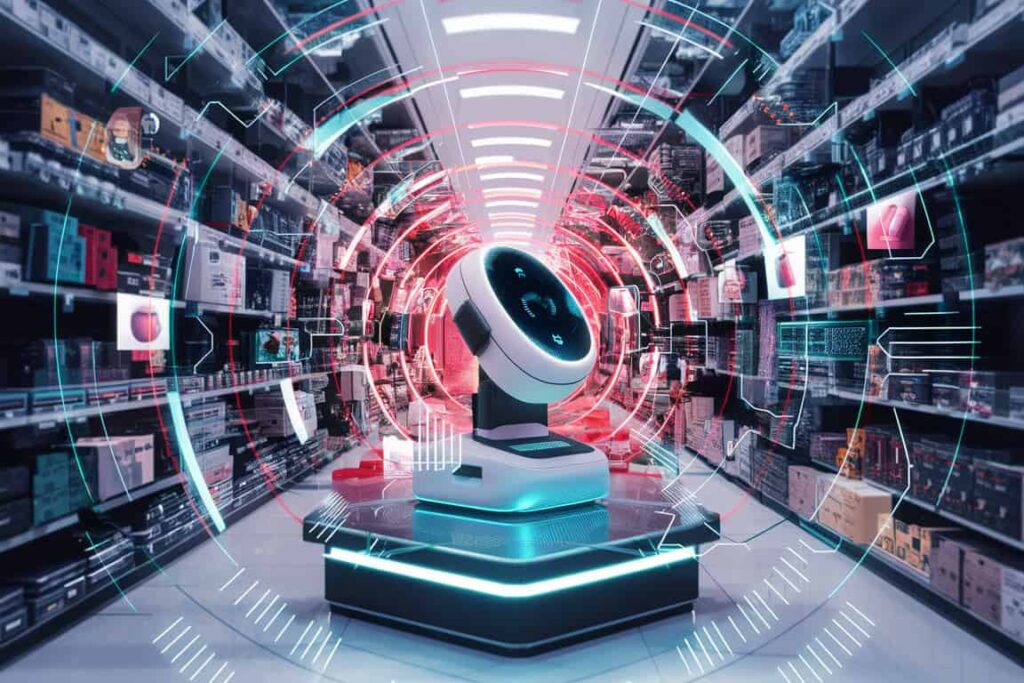
Advanced Analytics for Smarter Retail Strategies
Advanced analytics, driven by Generative AI and IoT, offers retailers valuable insights for refined strategies. By processing data from IoT devices—such as sales and foot traffic—AI reveals trends and patterns that guide strategic decisions. This helps retailers optimize product placements and tailor offerings to better meet customer demands.
Generative AI boosts predictive analytics by forecasting future trends from historical and real-time data. This foresight helps retailers manage inventory, adjust marketing strategies, and prevent overstocking or stockouts, ensuring they meet customer needs efficiently and profitably.
Additionally, advanced analytics allows for precise customer segmentation and targeting. Leveraging IoT and AI insights, retailers can design highly personalized marketing campaigns. This targeted approach enhances campaign relevance, increases engagement, and improves overall effectiveness, leading to greater customer satisfaction and loyalty.
Overcoming Challenges and Looking Ahead
Integrating Generative AI and IoT in retail presents data privacy and security challenges. Retailers must adopt strong cybersecurity practices and comply with regulations like GDPR to protect customer information. Measures such as encryption, secure access controls, and regular audits are vital to safeguarding data and maintaining customer trust.
Another challenge is integrating new technologies with existing systems. Retailers should invest in compatible solutions, provide thorough staff training, and work closely with technology providers. Effective management of these aspects will ensure seamless technology adoption, enabling advancements in personalization, inventory management, operational efficiency, and analytics.
In a nutshell, the integration of Generative AI and IoT is revolutionizing retail by boosting customer personalization and streamlining operations. This combination allows for customized interactions, automated inventory management, optimized supply chains, and advanced analytics. Despite challenges such as data privacy and system integration, addressing these issues through effective management and compliance can unlock the full potential of these technologies. Embracing Generative AI and IoT will help retailers innovate, enhance customer experiences, and thrive in a competitive market.







